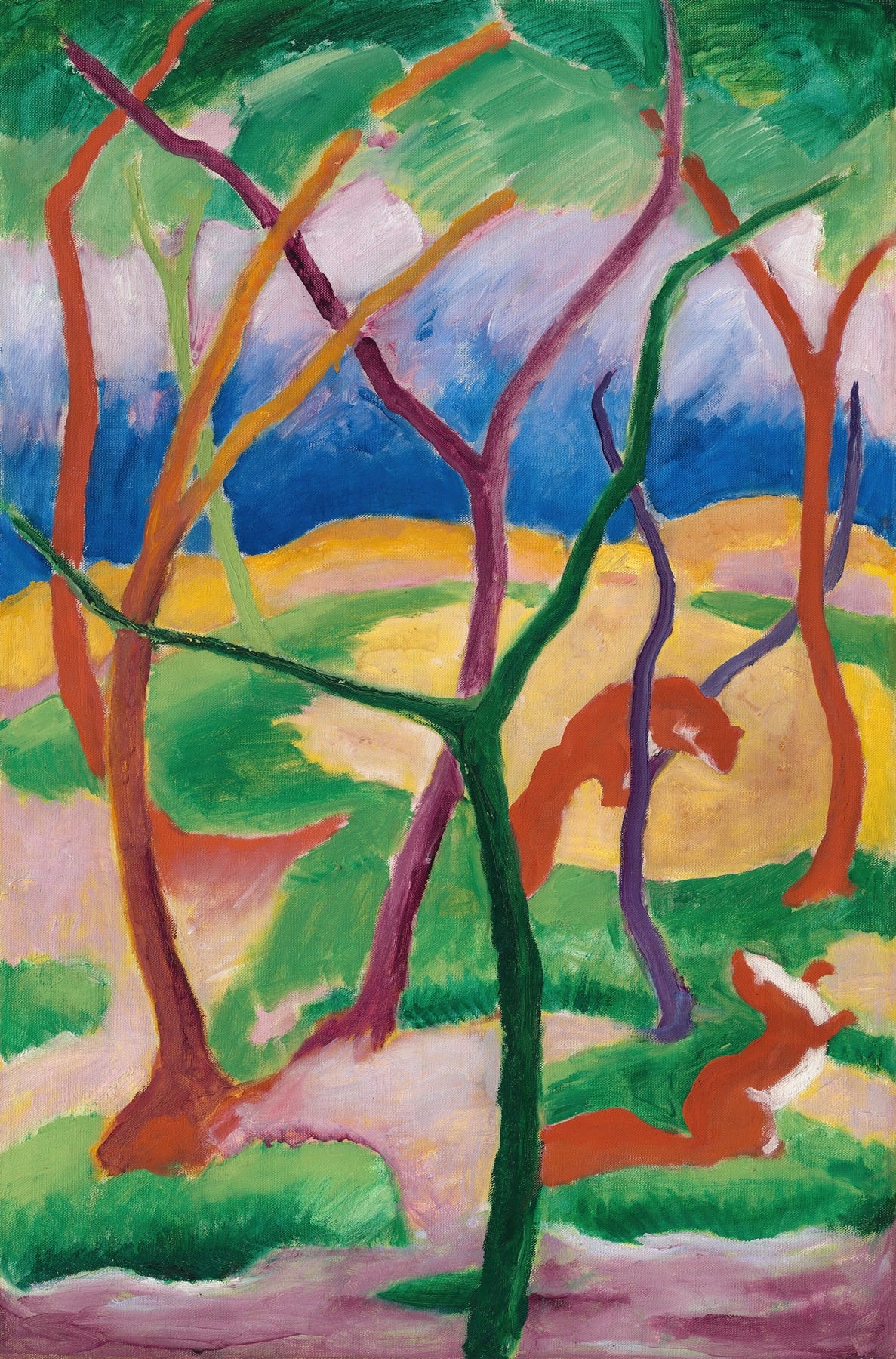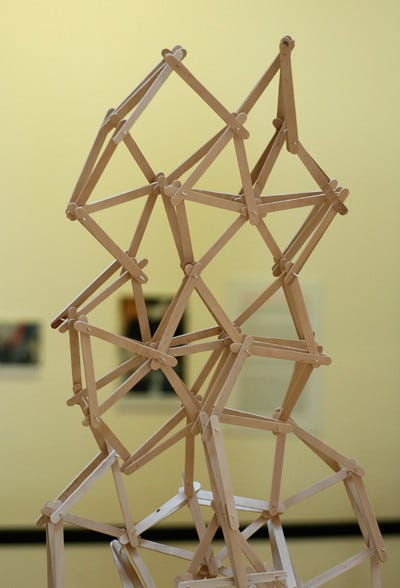Some philosophical underpinnings of the Zettelkasten: Rhizomes, Maps, and Immanence
Why the Zettelkasten prevails where other approaches fail
The Zettelkasten is an interesting and worthy object of inquiry. I am particularly interested in its connections to the thought of Gilles Deleuze, one of the thinkers most influential for my current thought.
You can read more about Deleuze from my introductory essay, How Might One Live.
Among Deleuze’s many concepts1 is the rhizome, a structure that allows mapping, itself another Deleuzian concept. The understanding of a Zettelkasten as a rhizome, and thus as a knowledge structure that allows for mapping, makes it ideal for ‘immanent knowledge growth,’ an insight of my own.2
Rhizome
The easiest way to make the rhizome intuitive is to compare it to its antithesis: the arborescent. If you know your way around English words, you will notice a hint of ‘tree’ in ‘arborescent.’
Indeed, appealing to trees is the best way to explain arborescent structure: the structure involves a trunk which splits into multiple branches. Then, those branches split further into branches, and on it goes. Every branch can be traced down to the trunk.
While trees might best represent arborescent structure, the structure is present elsewhere. Many non-Zettelkasten note-taking approaches have arborescent structure: organize your files into where they belong, keep them in the right notebook, and categorize new ideas into their correct spot.
But our ideas are not necessarily correct, but often experimental.
The word “experimental” is apt, providing it is understood not as descriptive of an act to be later judged in terms of success and failure, but simply as of an act the outcome of which is unknown. (John Cage, Silence p.13)3
As experimental, our ideas are unknown. How could we know the implications of radically new thoughts before thinking them through and letting them grow? And given how the best ideas are often those that cross disciplines, the arborescent structure, disallowing such crossing, inhibits creativity.
The alternative structure archetype is rhizomatic, where nodes (in our case notes) are not placed into any intrinsic hierarchy. To picture a rhizome, imagine cutting each branch of a tree. With the pile of sticks that is left, you can build anything you would like by creating connections where otherwise they would be impossible.
Zettelkasten as Rhizome
That ‘cutting’ visualization is not an accident. We only realize new connections, and therefore new constructions, when we separate ideas from their context.
This is key to the Zettelkasten’s claim of being rhizomatic. Continuing the terminology from Growing Knowledge with a Zettelkasten, we can tap into the power of rhizomatic structures only when we interact with small, individual pieces of knowledge. That is just what Zettelkasten enables.
But is the Zettelkasten, as a rhizomatic structure, really more creative than a non-rhizomatic knowledge structure? The answer is yes, because it enables mapping.
Mapping
Where the rhizomatic structure can be explained in contrast to the arborescent structure, mapping can be explained in contrast to tracing.
Like you would expect, tracing involves replication and representation. Something traced is judged by its deviations from what was traced; by the quality of representation. That much is obvious, but what is less obvious is that arborescent structures encourage tracing.
Consider one of the biggest knowledge trees around, Wikipedia. Wikipedia serves to represent the knowledge of the world, replicating it into the various languages of its articles. Articles are judged by factual accuracy, not by ‘creativity’ or ‘originality.’
In fact, creative work on Wikipedia is removed.4 This is a result of the arborescent structure of Wikipedia, where there is an effort to represent and be ‘correct.’
The antithesis to tracing is mapping, which involves creativity. Or, more illustratively put, creation.
Take two artists, both drawing the same scene. A passing art critic notices that one artist’s drawing “looks photographic” and the other’s “is completely unreal.” The other artist’s artwork is a product of mapping, where new possibilities are discovered—and where genius often lies.

And where tracing is arborescent, mapping is rhizomatic. This can be demonstrated by highlighting the mapping in Zettelkasten.
Mapping with Zettelkasten
See, working with a Zettelkasten is all about mapping. It is imperative to understand that a Zettelkasten is not an encyclopedia; and it is not meant to merely trace the world, but also create it.
Rather than trying to represent reality objectively, a Zettelkasten involves highly personal work. It might be said that a Zettelkasten is essentially personal, and as such requires you to think for yourself.
Whenever you make your own understanding of some material, you take note of it in your Zettelkasten. Whenever you come up with your own intriguing ideas, you make note of it in your Zettelkasten. Beyond being a place to keep your existing knowledge, it is a space for your new, experimental, creative understanding.
But something is lacking here between the ideas of mapping and rhizome. Bridging the two is immanence.

Immanence
Immanent structures are those where everything interacts at the same level.
To illustrate: Working on various projects often means separating concerns between the projects. You might be working towards a report, assembling materials for the report, and keeping them distinct from your hobbies. Many people even put completed projects behind them.
But it is easy to recognize that some knowledge of materials science, economics, or medicine, earned in some professional context, can play a role in becoming a better tennis player, a completely different context. When knowledge is immanent, the boundaries that projects create are broken down.
And where boundaries are broken, tracing is impossible. Instead, knowledge is mapped out and becomes resources for even more potential connections. And these connections, relating relevant materials, consistently creates relevant connections. This is the immanence of which I am interested.
This structural quality of immanence is present in the rhizome, which thrives with immanence. Naturally, so does the Zettelkasten.
Immanent Zettelkasten
Knowledge in the Zettelkasten is immanent. It is a rhizomatic vehicle of mapping, letting insights appear when they are relevant. Thus, the knowledge created with a Zettelkasten is consistently meaningful, consistently able to effect relevant people at their relevant levels.
You may have noticed that the name of my publication is Immanent Essays. The sense of ‘immanence’ is the same as described here,5 where everything is at the same level: meaningful and relevant.
Further, one of my goals with Immanent Essays is to write accessibly, such that it is capable of moving people of diverse walks of life. Ideally, the only prerequisite to learn from the essays is interest, not background.
Resources
My understanding of rhizomatic and arborescent structures, as well as mapping and tracing, are mostly due to the great video Explaining Deleuze with Drum Machines. It is accessible and highly recommended.
There has been prior interest in the connections between Zettelkasten and Deleuze’s thought. Zettelkasten, Rhizomes, and You is a great article exploring the connections.
My understanding of immanence is influenced by Gilles Deleuze; an Introduction. I continue to enjoy this book as much as I learn from it, so I strongly recommend it to those with great interest in Deleuze.
I recommended a few Zettelkasten resources in my essay Growing Knowledge with a Zettelkasten. Rather than recommending more, I urge you devote more time to doing real work with your Zettelkasten!
Many=Thousands, if you would like to hold him literally to one of his works, A Thousand Plateaus, written with Félix Guattari…
When I say it is my own insight, I do not mean that nobody has made the connection before—only that I have done so originally (as well).
I have not yet read Silence. I found this quote on the Emergent Futures Lab website.
See the Wikipedia page on this: https://en.wikipedia.org/wiki/Wikipedia:No_original_research.
And while I have said that creativity is removed, I do believe there is an art, and thus a sense of creativity, present in the presentation of Wikipedia articles. I hope it is clear that the sense of creativity is different from that which mapping is all about.




So clear and interesting. It’s fascinating to see how your brain works and how mine possibly could as well.